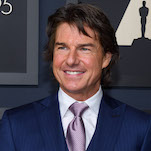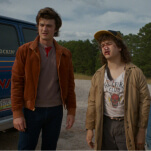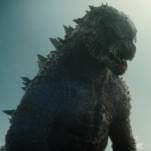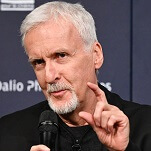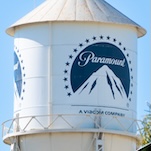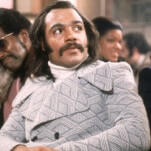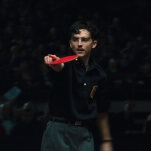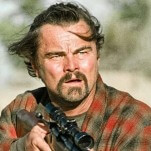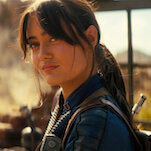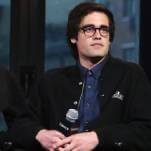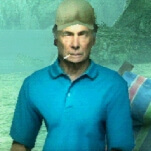Once Upon A Time In Mexico

Stories beginning "once upon a time" seldom turn as convoluted as quickly or irredeemably as Once Upon A Time In Mexico, writer-director-editor-cinematographer-composer Robert Rodriguez's final installment in the trilogy that began his career. Rodriguez burst out of nowhere in 1993 with the ultra-low-budget El Mariachi, a film whose shoestring technical expertise and loose sense of humor seldom betrayed its four-figure budget, which was partially financed by the director's willingness to subject himself to medical studies. Three years later, he proved he could handle a bigger assignment by essentially remaking El Mariachi as Desperado, with more money and a new-to-Hollywood star named Antonio Banderas. Since then, Rodriguez has become a movie factory unto himself, churning out entries in his charming Spy Kids series from a homemade studio while assuming more duties with each film. But that one-man-band approach lets him down in Once Upon A Time In Mexico, an overstuffed would-be epic that brings back Banderas' guitar-picking gunslinger and throws him into a plot involving a drug cartel, an attempted coup, and quite a few bullets. Johnny Depp co-stars as a happily amoral CIA agent who recruits Banderas to help manage a potentially explosive situation involving drug lords Willem Dafoe and Mickey Rourke, and their conspiracy to overthrow the government by way of rogue general Gerardo Vigil. So far, so good. As the title suggests, Rodriguez tries to capture the broad scope of Sergio Leone's later Westerns, but after a spry opening, Mexico loses its sense of direction almost as quickly as it loses its sense of humor. As the plot twists back on itself time and again, ill-defined characters struggle to make an impression, with even the reliably flamboyant Depp getting lost in the mix. Only Banderas, working his Desperado combination of sad-eyed machismo and murderous, balletic grace, gets beyond the two dimensions of his revenge-driven character. The action scenes highlight Rodriguez's trademark ability to choreograph firefights and explosions, but they're doled out with uncharacteristic stinginess between long stretches of exposition that clear up much less than they should, as the film builds toward a climax featuring some strangely underpopulated riot action. That kind of sloppiness works well enough for a Spy Kids film, but in a movie aimed squarely at the grown-ups, it's a lot tougher to forgive. Since discovering digital-video filmmaking, Rodriguez has become one of its most outspoken proponents. In Mexico, the imagery looks good enough to pass, though only occasionally great. The other elements are what make it feel like an elaborate home movie.





